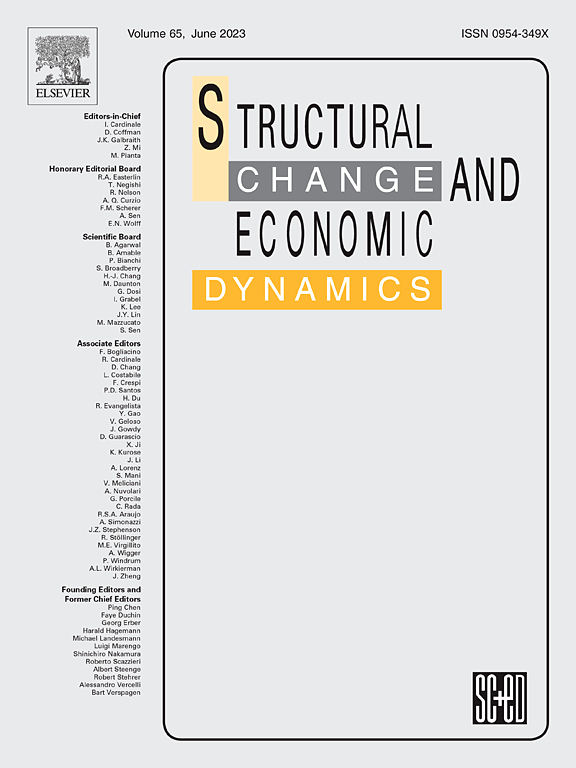毁灭的欲望。波兰企业层面的自动化图景
IF 5.5
2区 经济学
Q1 ECONOMICS
引用次数: 0
摘要
我们调查了波兰自动化的主要驱动因素。使用一个独特的职业-公司层面数据集,直接测量自动化,我们随后记录了一系列关于公司过去和计划采用自动化技术的程式化事实。这种采用远远超出了从农业和零售到专业和商业服务等影响制造业的行业,在以前吸引外国直接投资的部门中,这种采用的强度最高,而在面向研发的行业中则稍不明显。尽管存在巨大的行业和职业水平差异,但自动化的大部分变化可归因于行业内公司层面的异质性。生产率更高的公司往往不仅表现出更高的当前自动化水平,而且还表现出更大的进一步采用的潜力——结果是,平均而言,它们现在所处的位置与仍然可行的位置之间存在更大的差距。大公司更有可能实现自动化,因为与自动化相关的固定成本更容易被大企业吸收。我们还发现了一些支持出口学习机制的证据:在出口企业中观察到更高的自动化倾向。然而,出口地位和自动化之间的联系是相当不一致的,关键取决于贸易联系的性质。一般来说,在全球价值链的早期阶段专门生产中间体的出口商(前向联系)落后于更接近最终需求的同行(后向参与)。最后,我们的结果表明了对进一步自动化的显著需求,因为更先进的采用者似乎更有可能继续自动化他们的生产。本文章由计算机程序翻译,如有差异,请以英文原文为准。
Appetite for Destruction. A firm-level portrait of automation in Poland
We investigate the main drivers of automation in Poland. Using a unique occupation–firm level dataset with direct measures of automation, we subsequently document a series of stylized facts on firms’ past and planned adoption of automation technologies. The adoption extends well beyond the manufacturing — reaching industries from agriculture and retail to professional and business services, with intensity highest in sectors that previously attracted FDI and slightly less pronounced in R&D-oriented industries. Despite substantial industry- and occupation-level differences, much of the variation in automation can be attributed to firm-level heterogeneity within industries. More productive firms tend to exhibit not only higher current levels of automation, but also greater potential for further adoption — resulting, on average, in a larger gap between where they are now and what remains feasible. Large firms are more likely to automate, as fixed costs associated with automation are more easily absorbed by larger enterprises. We also find some evidence supporting a learning-by-exporting mechanism: a higher propensity to automate is observed among exporting firms. However, the link between exporting status and automation is quite heterogeneous and depends crucially on the nature of trade linkages. In general, exporters specialized in producing intermediates at early stages of GVC (forward linkages) lag behind their counterparts that are closer to final demand (backward participation). Finally, our results suggest a significant appetite for further automation because more advanced adopters appear more likely to continue automating their production.
求助全文
通过发布文献求助,成功后即可免费获取论文全文。
去求助
来源期刊

Structural Change and Economic Dynamics
ECONOMICS-
CiteScore
9.60
自引率
4.90%
发文量
159
期刊介绍:
Structural Change and Economic Dynamics publishes articles about theoretical, applied and methodological aspects of structural change in economic systems. The journal publishes work analysing dynamics and structural breaks in economic, technological, behavioural and institutional patterns.
 求助内容:
求助内容: 应助结果提醒方式:
应助结果提醒方式:


